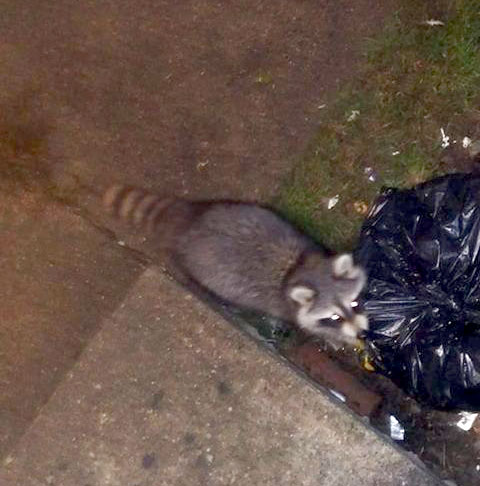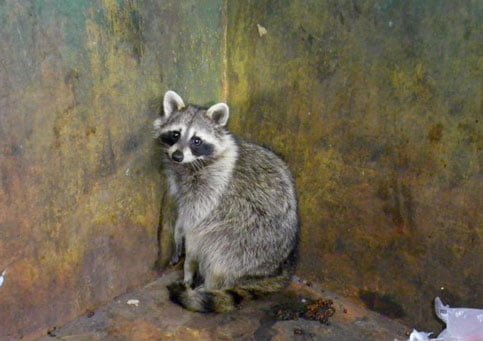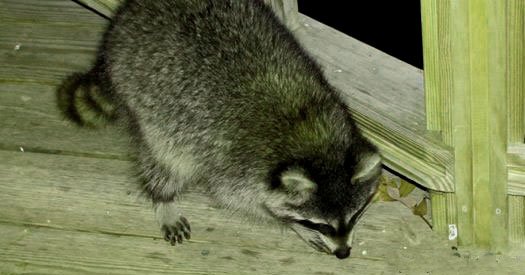How to Get Rid of Racoons in the Attic
Do not let their cute masked faces fool you; raccoons can be pests. These furry dumpster divers have a knack for leaving messes in people's backyards. This is in addition to them being carriers of disease-causing microorganisms.
While they might look cute and harmless, these furry visitors can be a pain in the Ass. Being omnivorous, they aren't picky about what they eat. And if you do not Do something about them, you might wake up one day to find your goldfish missing.
Which brings us to the all-important question of how to get rid of raccoons? Since they have a habit of making their homes in our attic getting rid of them may require Some ingenuity. In this article, I will be going through some of the ways of getting rid of raccoons.
Best Raccoons Trap? Really?
These are some of the best raccoons trap currently ruling the market and one can easily get help from these traps. Check out these…
Bestseller No. 1
Bestseller No. 2
Bestseller No. 3
Bestseller No. 4
Bestseller No. 5
Last update on 2021-11-12
What Attracts Raccoons?
Raccoons can eat just about anything. So the question of what attracts raccoons has many answers. For starters, raccoons are attracted by garbage cans where dump our leftovers.

These furry animals are also attracted to your home by bird feeders, goldfish ponds, and chicken coop. Apart from bird feeders, they are also attracted to our homes by the site of deer feeders. Gardens with sweet corn can also lure a raccoon to your property.
What Does A Raccoon Nest Look Like?
So what does a raccoon nest look like? It is hard to tell how the nest looks like. However, the nest will most probably be located in a hard-to-reach area. Due to their strong maternal instincts, mother raccoons are very careful about their dens.

The nest will be in a small opening in the wall or the attic. It will also have a lot of droppings around it.
How To Scare Raccoons
As we have already established raccoons are nocturnal and thus try as much as they can to avoid light. That being said one of the best answers to the question of how to scare raccoons is to use light, lots of light.

Ideally, the outside of your home should be bathed in floodlight if you want to scare away raccoons. Of course, this presents another challenge, how do you bathe your home in light without painfully increasing your electricity bill?
The best answer to this is to opt for LED floodlights. Also, you can throw in some motion sensors that activate the floodlights. This will ensure the floodlights turn on whenever there is movement outside.
Fencing might seem like a good answer to how to scare raccoons away. However, for your fence to be effective, it needs to be extra tall. Raccoons are excellent climbers and will easily scale your fence.
Similarly, raccoons are also excellent at digging, so the fence needs to extend deep into the ground. Better yet why not make the fence electric.
What To Do When You See A Raccoon
While they are nocturnal animals, there is a possibility of coming face to face with a raccoon during the day. When that happens, the last thing you want to do is attack or approach the animal.
Raccoons are carriers of diseases that are deadly to humans. Without knowing whether a raccoon is a carrier or not you can end up on a hospital bed. Thus, the best thing to do is not approach the animal.
Since they will most probably be afraid of seeing you, raccoons will generally try to avoid human contact. And can get defensive when they do come into contact with us.
How To Get Rid Of Raccoons Under Deck
When you suspect you have a raccoon living under your deck, then the culprit is most likely a mother raccoon with her babies. Fortunately for us, what they lack in tableside manners raccoon more than makes up for with excellent parenthood.
Raccoons are excellent parents and will move their babies as soon as they feel frightened. So if you are wondering how to get rid of raccoons under the deck, here is what to do. Raccoons have picked your deck because it is a dark, quiet, and safe place.

So the first thing to do is interfere with the quietness and safety of the deck. This you can do by introducing a bright light at the entrance of the raccoon den. An outdoor spotlight or mechanic light will do the trick.
Next place a radio tuned to a talk station near the den's entrance. Raccoons feel threatened when they hear human voices. Lastly, use rags soaked in ammonia or apple cider vinegar to create a smelly atmosphere near the entrance of the den.
Scent deterrents alone aren't effective against raccoons. But when used in conjunction with light and sound are very effective. All these disturbances will go a long way in convincing the mother raccoon a deck is no longer a safe place for her and her babies.
Keep all these things in place for three days. After this, you can do a paper test to check whether the raccoons have vacated the deck. To do this simple push balled up newspaper in the deck ensuring it covers the entrance.
Wait for another three days and check. If the newspapers are still in place, then chances are the raccoons have left the building.
How To Get Rid Of Raccoons In Attic
The attic is another part of your home that is prone to raccoon infestation. So it is always prudent to learn how to get rid of raccoons in attic. There are several ways on how to get rid of raccoons in your attic.

The most effective is using a trap. Before doing this, you must find where the raccoons are getting in through. This can be through an opening in the wall or through a hole in the corners of the attic.
Next, seal this entryway. If there is a raccoon residing in your attic, it will have nowhere to go. Finally, set the cage trap ensuring it is lined with newspapers at the bottom. The newspaper will make the trap easy to clean.
Then you have to wait for the raccoon to get into the cage. With no way out of the attic, raccoons will become curious and want to check out the cage. Once they do, they will trigger the trap and get caged.
To ensure you catch the varmint, you can set up a remote camera near the trap. This will give you a good view of the trap. In this way, you will be able to know when a raccoon enters the cage.
Now that you have cornered your prey and gotten rid of the infestation, the next question is how to keep raccoons out of your attic. The best way is to ensure all entryways are sealed. You can also use scent deterrents that will scare away any raccoons that dare enter the attic.
How To Trap A Raccoon In Your Attic
Trapping of any animals raccoons included is always a sensitive topic. In some states, the trapping of animals is not allowed. So if you want to know how to trap a raccoon in your attic, it is important to find out if your state allows it first.

If your state does allow the trapping of animals, then we can get on to trapping. First, you will need a couple of suppliers. You will need a metal cage or an animal trap, which you can find in most hardware stores.
In addition, you will need spray foam, pinecone, peanut butter, newspaper, wire, and a long sturdy pole. The first step will be to locate the hole through which the raccoon is entering the attic and seal it.
Next, coat the pinecone with peanut butter and wrap a 12 to 18-inch long wire around the pinecone. Ensure the wire fastens securely around the pinecone's grooves. Next, hang the pinecone inside the cage.
The pinecone should be placed somewhere near the center of the cage. Next, take the cage into the attic and place it in an area away from wires. Spread out the newspapers under the cage. Leave the cage in the attic and wait.
With nowhere to go the raccoon will eventually get into the cage trying to retrieve the pinecone. By so doing they will activate the trap and lock themselves in. Once you have trapped the raccoon inside the cage, it's time to let it go.
Raccoons though cute and seemingly harmless are vicious creatures especially when trapped. Thus do not get to close to the cage rather use a long pole to handle it. The final step is to transport the raccoon far away from your home, 10 plus miles away will do.
How to Get Rid Of A Raccoon In Your Garage
There are times when we leave our garages open during the day. At such times raccoons may find their way in search of something edible. Which brings us to the all-important question of how to get rid of a raccoon in your garage?
Similar to the deck, raccoons can build their homes inside your garage because it is a dark, quiet, and safe place. In such an instance, the best thing to do is make sure your garage lights are on.
Raccoons are nocturnal animals and as such do not like light. Leaving your garage lights on will scare any raccoons living inside away. You will have to patient to allow the raccoons to leave your garage on their own.
Another method you can use on how to get a raccoon out of the garage is by using a trap. However, caution should be taken as trapping animals is illegal in some states. When it comes to using a trap, there are quite a number of traps you can use.
How To Get Raccoons Out Of Chimney
It is already established that raccoons love dark and quiet places, and there is no place that is darker and quiet than your chimney. When a raccoon or raccoons invade your chimney, there are several things you can do.
On how to get raccoons out of chimneys, you can use scent deterrents such as a predator's urine. There are also raccoon eviction fluids you can use to scare the raccoons away.
Alternatively, you can use a special chimney trap, which you set atop the chimney. The trap will catch the raccoons as they or exits the chimney. There are other traps that can be placed at the base of the chimney as well.
The one thing you should not do is open the damper. This will give the raccoon access to the fireplace and your home. If the raccoons do not mess up your home, you might end up having a roasted raccoon carcass, and nobody wants that.
The one thing you should not do is open the damper. This will give the raccoon access to the fireplace and your home. If the raccoons do not mess up your home, you might end up having a roasted raccoon carcass, and nobody wants that.
How To Get Rid Of Raccoons At A Deer Feeder
Like all other wild animals, raccoons are always looking for food. In this regard, they will be more than happy to invade your deer feeder. This raises the question of how to get rid of raccoons at deer feeder. There are several things you can do. The first is to have a fence around the deer feeder preferably an electric fence. You can also use a raccoon trap at the base of the deer feeder. However, it is important to note that the trapping of raccoons is illegal in some states.

How To Catch A Raccoon Without A Trap
So how to catch a raccoon without a trap? Raccoons are intelligent animals that can get vicious when cornered. Therefore, scaring a raccoon away from your property is the best way to get rid of a raccoon without using a trap. This is especially in the case of a mother raccoon. Trying to approach and physically grab a cornered raccoon is dangerous. Essentially because they can scratch your face or leave disease-causing microorganisms with you.
What To Do With A Trapped Raccoon
Trapping and relocating a raccoon is not always agreeable in the eyes of the law. So if you plan on trapping and relocating a raccoon, you need to find out what your state says about this. But when you do get a trapped raccoon, what next. Knowing what to do with a trapped raccoon is important. The natural thing to do is to take it about 10 plus miles away from your property. There are those that advocate for the killing of a trapped raccoon, but this is not always an effective plan of action.
Conclusion
Raccoons are some of the most common pests in the US. These furry creatures are always scavenging for food which is why they love our dumpsters so much. They are known to leave a mess everywhere they go and are carriers of diseases.
About The Author:
Lake Streeter, A Gun enthusiast, and loves to hunt in the middle of the wood. Always check the latest hunting gears out in the market and try to share his honest opinion with the audience in OUTDOOR EVER.
How to Get Rid of Racoons in the Attic
Source: https://outdoorever.com/how-to-get-rid-of-raccoons/